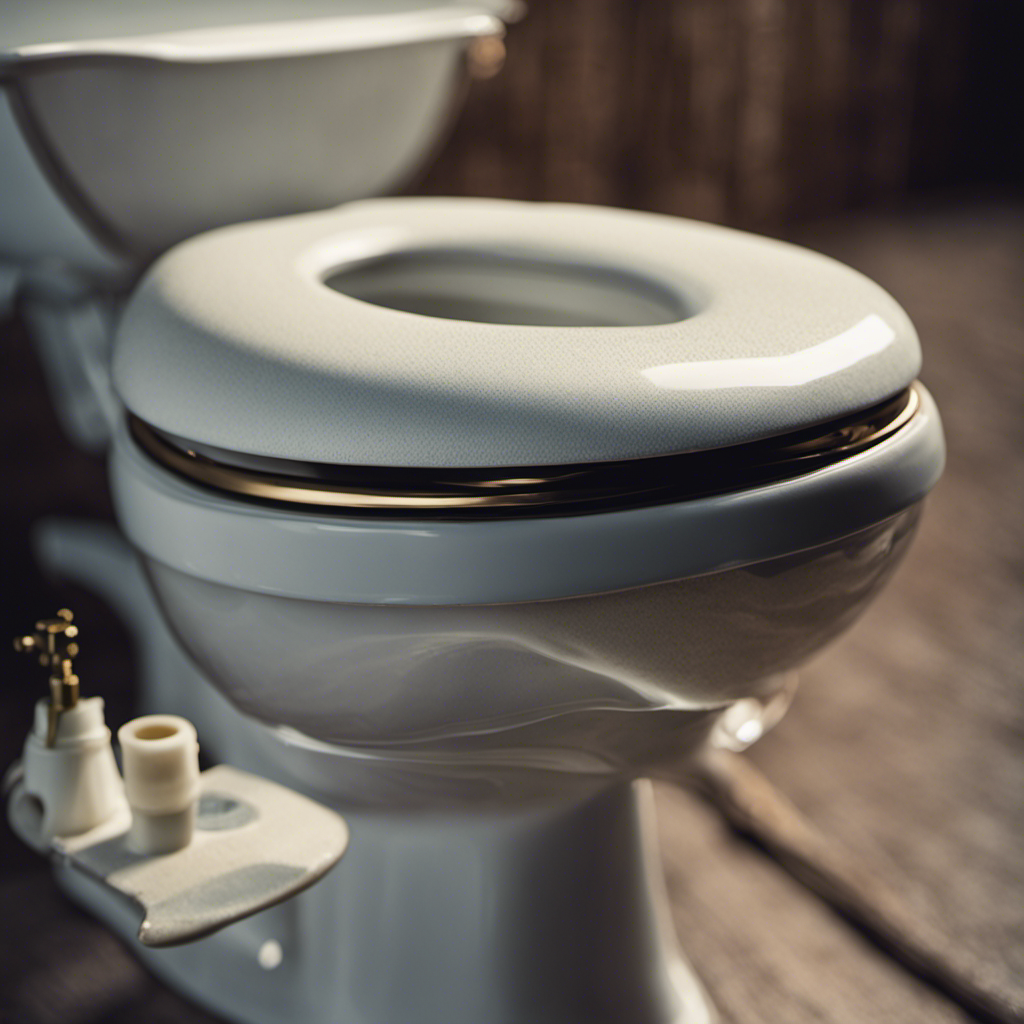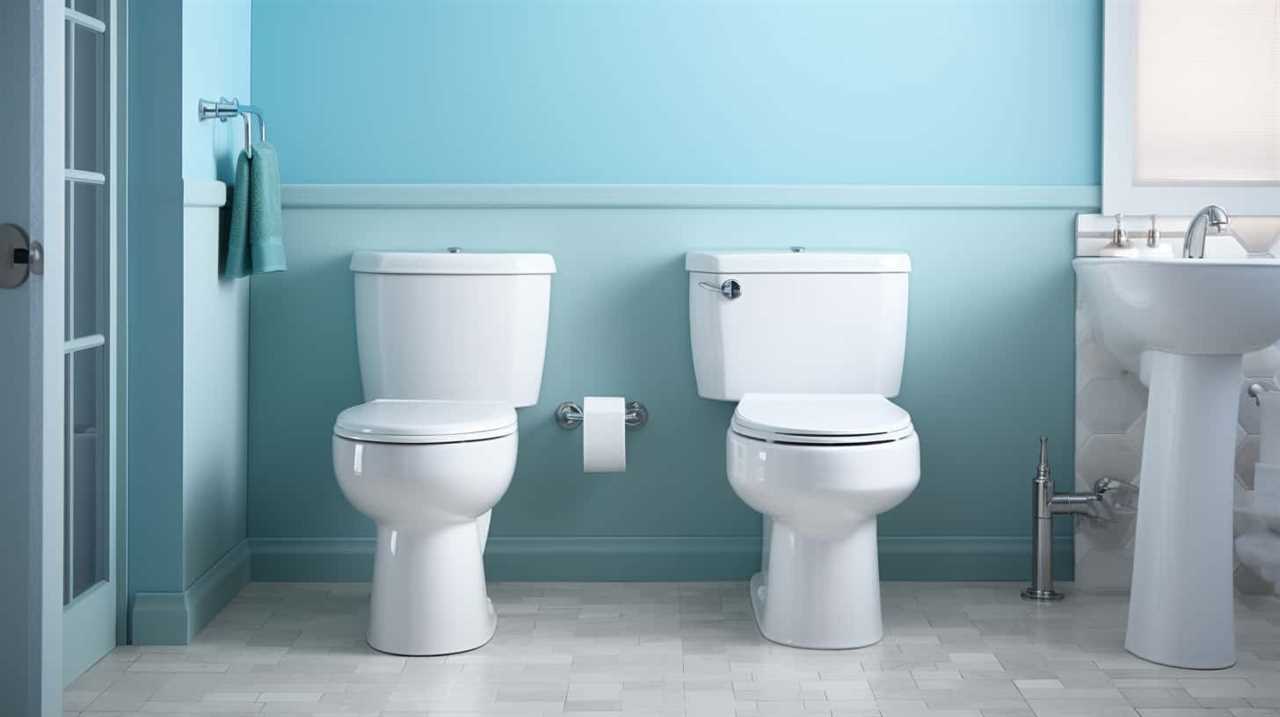Are you tired of the constant sound of water running in your bathroom?
Wondering which repairs are typically needed when your toilet won’t stop running?
Look no further! In this article, we will delve into the common causes of a running toilet and provide you with detailed steps to fix the issue.
From a faulty flapper valve to an adjustable fill valve, we’ll cover it all.
So, let’s get ready to tackle this pesky problem together!
Key Takeaways
- The most common cause of a running toilet is a faulty or worn flapper valve.
- To fix the flapper valve, turn off the water supply, inspect and replace the valve if necessary, and ensure a proper seal and chain length.
- Another common issue is an improperly adjusted fill valve, which can be fixed by turning the adjustment screw and adjusting the water level.
- The float mechanism should also be checked for proper adjustment and any damage should be repaired or replaced.
Common Causes of a Running Toilet
One common cause of a running toilet is a faulty flapper valve. The flapper valve controls the flow of water from the tank to the bowl. When it doesn’t function properly, water continuously leaks from the tank into the bowl, causing the toilet to run constantly.
To address this issue, there are preventive measures you can take. First, regularly inspect the flapper valve for any signs of wear or damage. If you notice any issues, replace it immediately.
Additionally, DIY troubleshooting techniques can help diagnose and fix the problem. Check the flapper valve for a proper seal, ensuring it closes tightly after each flush. Adjust the chain length connecting the flapper valve to the flush handle, as a too-tight or too-loose chain can affect its performance.
Fixing a Faulty Flapper Valve
To fix a faulty flapper valve, you can start by turning off the water supply to the toilet. Troubleshooting leaky toilets is important to prevent water wastage and potential damage to your bathroom floor. Signs of a worn flapper valve include water constantly running in the toilet bowl, a weak flush, or a toilet that won’t flush at all.
Begin by locating the water shut-off valve behind the toilet and turning it clockwise to stop the flow of water. Next, remove the tank lid and flush the toilet to drain the water from the tank. Inspect the flapper valve for any signs of wear or damage. If necessary, disconnect the chain and replace the flapper valve with a new one.
Adjusting the fill valve is the next step to ensure proper functioning of your toilet.
Adjusting the Fill Valve
To adjust the fill valve, you’ll need to locate the adjustment screw on the top of the valve. This screw controls the water level in the toilet tank and can be turned clockwise to decrease the water level or counterclockwise to increase it.
Adjusting the fill valve is a simple and effective way to regulate toilet water pressure and prevent issues such as overflowing or running toilets.
Here are three key steps to adjust the fill valve:
- Turn off the water supply to the toilet by closing the shut-off valve.
- Flush the toilet to drain the remaining water from the tank.
- Use a screwdriver to turn the adjustment screw on the fill valve, either clockwise or counterclockwise, depending on the desired water level.
Checking and Repairing the Float Mechanism
Start by shutting off the water supply to your toilet.
Next, locate the float mechanism, which is a small plastic or metal ball attached to an arm inside the toilet tank. The float mechanism is responsible for regulating the water level in the tank.
If your toilet is running all the time, it could be due to a malfunctioning float mechanism. To troubleshoot the water level issue, first, check if the float is properly adjusted. Make sure it is not too high or too low. If the float is set at the wrong height, it can cause the toilet to continuously run.
Additionally, inspect the float for any signs of damage or wear. If the float is damaged, it may not be able to properly control the water level. In this case, it will need to be replaced.
Once you have resolved the float mechanism issue, you can move on to the next step of replacing the toilet flush handle.
Replacing the Toilet Flush Handle
Once you’ve checked and repaired the float mechanism, you can easily replace the toilet flush handle. Troubleshooting a running toilet often involves replacing the flush lever, which is the mechanism that activates the flushing process. Here’s how you can do it:
-
Turn off the water supply to the toilet by shutting off the valve located behind the toilet.
-
Remove the tank lid and locate the flush lever on the side of the tank.
-
Unscrew the nut securing the flush lever inside the tank using a pair of pliers.
-
Pull out the old flush lever and replace it with a new one, making sure it aligns properly.
-
Tighten the nut to secure the new flush lever in place.
-
Turn on the water supply and test the flush lever to ensure it operates smoothly.
Conclusion
So, there you have it. When your toilet is running all the time, there are a few common repairs that you can try.
First, check the flapper valve and see if it needs to be fixed or replaced.
Next, adjust the fill valve to ensure the proper water level.
Don’t forget to also check and repair the float mechanism if necessary.
And finally, if all else fails, it may be time to replace the toilet flush handle.
With these simple steps, you can fix your running toilet and avoid any unnecessary water wastage.
Remember, a properly functioning toilet not only saves water but also saves you money.
So why wait? Take action and get your toilet back in working order today!










